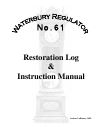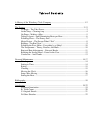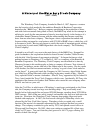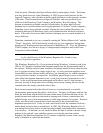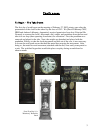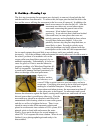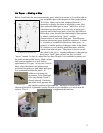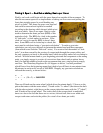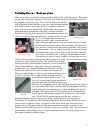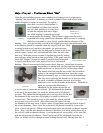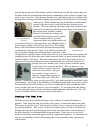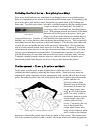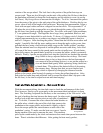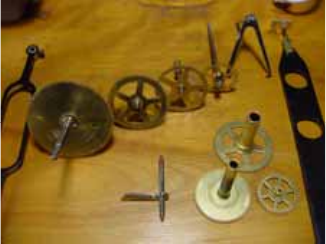
6
Taking it Apart – And Determining Beats per Hour
Finally, real work could begin with the gears themselves outside of the movement. To
take the movement apart was a simple matter of taking out five screws and pulling the
front plate straight upward to avoid bending any
pivots or shafts. This done, the gears were exposed
and could be removed and replaced as needed
according to the drawing which showed which pivot
hole was which. Once it was apart, I had to count
teeth to determine the beats per hour (BPH) of this
particular clock. The BPH of a clock is the number
of “tick-tocks” a clock makes in one hour. If the
clock isn’t set to its specific BPH, it doesn’t keep
time. Some BPHs can be looked up in a book, but
most must be calculated using a “gear train calculation”. To make a gear train
calculation, one only uses the gears in-between the minute hand and the escapement
(from which issues forth the “tick-tock” noise). You want to find the number of “tick-
tocks” in an hour caused by the passing of escape teeth through the escape pallets, and
the only constant you know is the minute hand, which invariably makes one revolution in
an hour. With the minute hand as your beginning point and the escapement as the ending
point, you simply engage in a series of conversions from wheel teeth to pinion leaves
until you find the number of teeth on the escapement that pass a single point in exactly
one hour. The Waterbury Regulator No. 61 happens to have a “seconds pendulum”
which I knew from the beginning meant that it had to have 60 beats in one minute times
60 minutes in one hour for a total of 3600 BPH. Happily, my gear train calculations
reflected that exactly, as shown below:
80
72
___
x
___
x (30 x 2) = 3600 BPH
12
8
There are 80 teeth on the center wheel (which drives the minute hand), 12 leaves on the
pinion that mates with the center wheel, 72 teeth on the “3
rd
wheel” (that shares the shaft
with the above pinion), eight leaves on the escape pinion that mates with the “3
rd
wheel”,
and 30 teeth on the escape wheel. The tooth count of the escape wheel is multiplied
times two due to the fact that there are two noises, tick and tock, that occur when each
escape tooth enters and exits the pallets (for a total of two beats per tooth).



